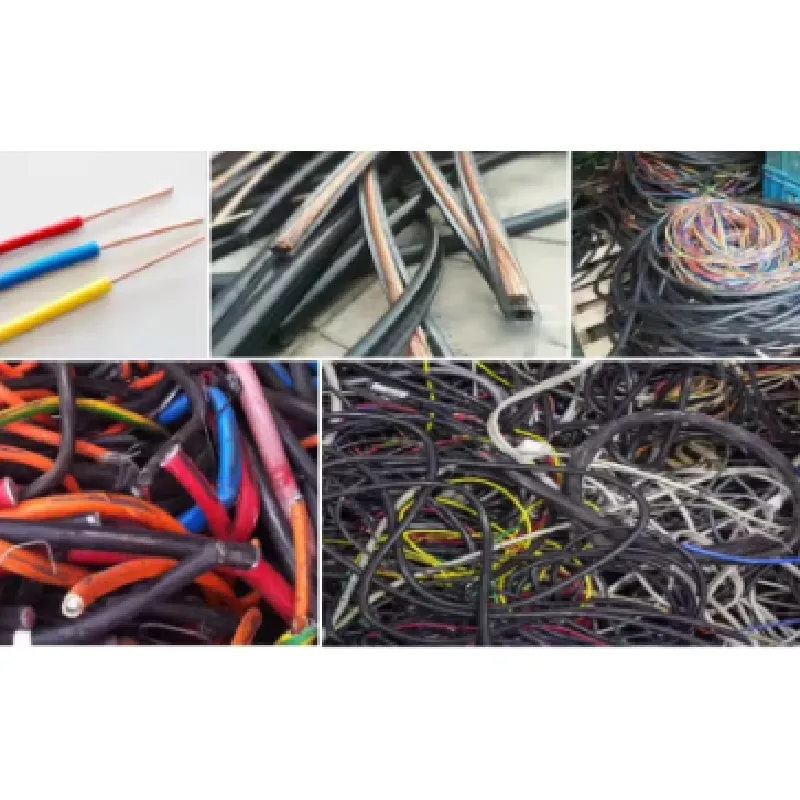

Ное . 07, 2024 11:47 Back to list
How Do You Dispose of Broken Electronics?
In our increasingly digital world, electronics have become an integral part of our daily lives. From smartphones and laptops to televisions and kitchen gadgets, we rely on these devices for work, communication, and entertainment. However, with the rapid pace of technological advancement, electronics can become outdated or broken sooner than we expect. Disposing of broken electronics presents significant challenges and responsibilities, both for individuals and for the environment. This article outlines important considerations and steps for the responsible disposal of broken electronics.
Understanding Electronic Waste (E-Waste)
Electronic waste, or e-waste, refers to discarded electrical or electronic devices. When electronics are disposed of improperly, they can contribute to environmental pollution, as many electronic items contain toxic materials such as lead, mercury, and cadmium. These substances can leach into the soil and water supply, posing health risks to humans and wildlife. Thus, responsible disposal is not just a personal choice but a social and environmental imperative.
Assessing Your Broken Electronics
Before deciding how to dispose of your broken electronics, assess their condition. Is the device completely non-functional, or can it be repaired? In many cases, devices that seem beyond repair simply need minor fixes. Investigate local repair shops or see if you can troubleshoot issues at home. Many communities have “repair cafes” where volunteers help individuals fix their broken gadgets.
If the item is indeed beyond repair, you have several options for disposal.
Recycling Programs
One of the most responsible ways to dispose of broken electronics is to participate in recycling programs specifically designed for e-waste. Many manufacturers and retailers offer take-back programs that allow consumers to return their old devices. For example, major brands frequently have recycling initiatives that include drop-off locations or mail-in options. During these programs, devices are broken down, and valuable materials are recovered while ensuring harmful substances are disposed of properly.
Additionally, many local governments organize e-waste recycling events. These events allow residents to bring their broken electronics for safe disposal. Check your local municipality’s website for information on scheduled events or designated drop-off locations.

Donation and Reuse
Sometimes, even broken electronics can be salvaged for parts or refurbished. Charities and non-profit organizations often seek donations of old electronics to either refurbish for those in need or to dismantle for parts. Organizations like Goodwill and Habitat for Humanity may accept broken electronic items.
Before donating, ensure that you erase all personal data from the device. This is crucial for protecting your information and privacy. For computers and smartphones, perform a factory reset or use software tools specifically designed for data deletion.
Specialized E-Waste Collectors
For those unable to access local recycling programs or who possess larger electronics like refrigerators or televisions, specialized e-waste collection services can be an alternative solution. These services include professional e-waste disposal companies that will pick up and safely recycle your broken electronics. While there may be fees associated with these services, they ensure responsible handling and disposal of toxic materials.
Safe Storage until Disposal
If immediate disposal is not possible, it’s essential to store broken electronics safely. Keep them out of reach of children or pets and ensure they are stored in a dry place to prevent further damage or potential hazards. Avoid storing e-waste in regular trash bags or bins, as these might end up in landfills where they could cause environmental harm.
Conclusion
Disposing of broken electronics requires careful consideration of the environmental impact and available disposal options. By taking responsible steps—such as assessing the condition of your electronic devices, utilizing recycling programs, considering donation, and consulting specialized e-waste collectors—you can contribute to reducing e-waste and protecting the planet. Remember that in a world that thrives on innovation and technology, our commitment to responsible disposal can help ensure a sustainable future for generations to come. By making informed choices, we can diminish the negative impacts of e-waste on our environment and society.
Latest news
Troubleshooting Common Eddy Separator Problems
NewsJul.04,2025
The Role of Metal Recycling Plants in Circular Economy
NewsJul.04,2025
The Impact of Recycling Line Pickers on Waste Management Costs
NewsJul.04,2025
Safety Features Every Metal Shredder Should Have
NewsJul.04,2025
How Industrial Shredders Improve Waste Management Systems
NewsJul.04,2025
How Cable Granulators Contribute to Sustainable Recycling
NewsJul.04,2025